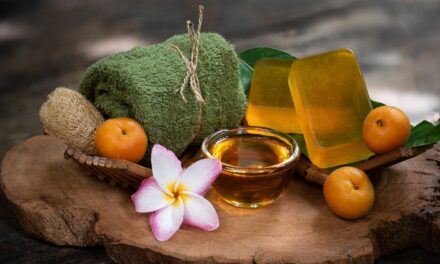If you’ve ever stood under the warm spotlight of a jewelry store, gazing at a diamond that sparkles like it holds the secrets of the universe—welcome to the club. Shopping for diamonds can feel a little like navigating a luxury maze: dazzling, high-stakes, and full of glittering distractions. But beneath all the sparkle, there’s one piece of paper that holds more weight than the stone itself: the diamond certificate.
Now, before you roll your eyes and think, “It’s just paperwork,” hear me out. That humble document is your only guarantee that the diamond you’re falling in love with is exactly what the jeweler says it is. It’s not just about carats and cuts—it’s about trust, investment, and making sure you’re not overpaying for a pretty piece of glass.
So, let’s talk about certification, and why every buyer, especially those looking to buy premium diamond jewelry, should treat it like gospel.
What Is Diamond Certification?
Simply put, a diamond certification is a thorough report produced by a gemological laboratory following examination of a diamond’s quality. Imagine it as a CV for your rock; rather, it’s brutally honest and full of scientific information.
It addresses:
- Cut (how effectively the facets of the diamond interact with light)
- Color (from D to Z graded)
- Clarity (flaws, both internal and external)
- Carat size
- Proportions and measurements
And depending on the lab, it might contain data on fluorescence, polish, symmetry, and even whether the diamond is natural or lab-created.
The Importance of Certification
Imagine you’re looking for a solitaire ring, maybe something classic with an Indian touch, like a gold band with detailed meenakari work coupled with a spectacular diamond. A “1-carat VS1, G-color” diamond would set you back ₹2.5 lakhs. Sounds amazing, no?
But how can you tell it’s actually VS1 quality and not SI2 without a certificate? How do you tell it’s a G and not closer to J, where the yellow hue starts to slip in? Most individuals cannot see the difference with the naked eye, which is precisely where dodgy vendors operate.
Especially whether you intend to pass it on as a family treasure, sell it, or just want to know you made a prudent, well-informed purchase, a diamond certificate protects you against overpaying.
The Major Players in Diamond Certification
Not all certificates are equal. While some laboratories are rigorous, others are more forgiving. Some are best left unnoticed while others are known worldwide. Let’s analyze the major players:
1. GIA (Gemological Institute of the United States)
The golden standard. GIA is famous for its consistent and rigorous grading. A jeweler’s GIA certification usually gives you confidence in what is on the label.
2. International Gemological Institute, or IGI
Popular in India and the Middle East, IGI is a well-known name for certifying diamonds in locally manufactured jewelry. Although not as rigorous as GIA, it is generally accepted, especially for bigger Indian wedding sets or designer works.
3. Hoge Raad voor Diamant, or HRD
HRD (Hoge Raad voor Diamant) HRD, based in Antwerp, is rather respected and credible in Europe. Less frequent in India, yet important to know about if you’re buying globally.
4. Solitaire Gemmological Laboratories), or SGL
Another lab often found in Indian markets, especially in mall-based retail chains. Good for lightweight daily wear items or tiny stones.
The general guideline? Stick to GIA or IGI certificates if you’re paying premium rates.
Certification or Appraisal
A frequent misunderstanding I hear is this one: “The jeweler handed me a certificate that indicates the ring is worth ₹5 lakhs. So, it’s certified, correct?
Not really. That’s an appraisal, not a certification.
Often for insurance reasons, an appraisal is a projected retail value, sometimes exaggerated. Conversely, a certificate is a technical paper describing the diamond’s true qualities. Always demand a correct lab certification, not only a store-branded value.
Indian Diamond Jewelry: Contextual Certification
Let’s discuss desi. Indian diamond jewelry has its own personality—think elaborate polki necklaces, diamond-studded temple jewelry, or modern rose gold mangalsutras. These usually mix vintage craftsmanship, colorful stones, or uncut diamonds.
For instance, Polki is uncut and uneven, hence it often lacks certificates. In such situations, request a hallmark from a respected jeweler or a quality assurance paper. For newer items, such as a navratna ring with a certified center diamond, ensure the center stone (at the very least) has a GIA or IGI cert.
A friend of mine just purchased a beautiful jadau set for her wedding. Though the diamonds were little, the seller boasted an IGI certification for the larger centerpiece stone. That made a world of difference; it signified the workmanship was consistent with genuineness.
Tips for Smart Diamond Buying
- Before purchasing, request to view the certification. Not later. Not on delivery.
- Check the certifying lab’s website for a cross-checked grading report. Most labs let you confirm with a report number.
- Purchase from well-known jewelers. Extra points if they belong to groups such GJEPC (Gems & Jewellery Export Promotion Council).
- Look at apples against apples. Though if quality is important, choose for the more rigorous grading even if a 1-carat GIA diamond could be more expensive than an IGI one.
- Don’t overlook the little things. Though they influence the diamond’s fire and brightness more than you would anticipate, polish, symmetry, and fluorescence may not appear to be significant.
Wrapping Up
Buying diamond jewelry, especially when it’s for a wedding, anniversary, or personal milestone—is about more than looks. It’s about legacy, feeling, and value. Buying fine diamond jewellery is not only a gemstone investment. You are buying a narrative that will shine throughout generations.
Stories, therefore, merit fact-based protection.
Smart consumers don’t just fall for shine, they seek the signature.





